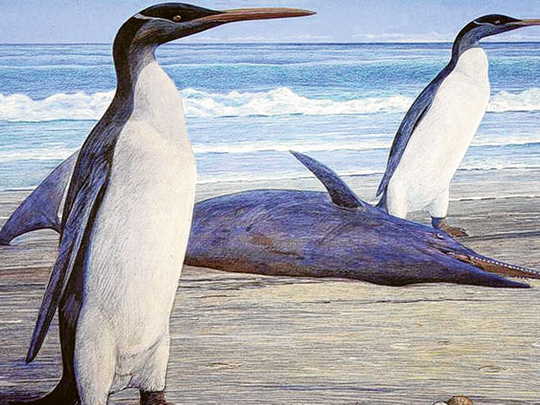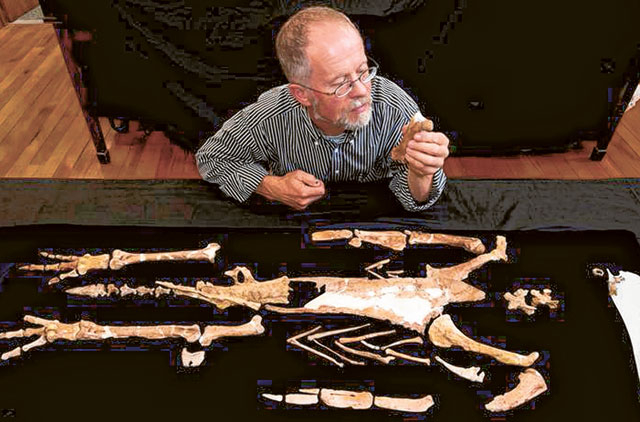
Wellington It was a slender bird, with long wings and a spear-like bill to catch swift ocean prey. And scientists say the first glimpse of the extinct giant penguin species was worth the 26 million-year wait.
Experts from New Zealand and the US reconstructed a fossil skeleton of one of the giant sea birds to reveal a body shape unique from known penguin species with features that have them describing it as one elegant bird.
The bird they dubbed Kairuku — Maori for "diver who returns with food" — stood about 4 feet 2 inches tall and lived in the Oligocene period, about 26 million years ago. The research on Kairuku was published this week in the Journal of Vertebrate Paleontology.
The first Kairuku bones were discovered 35 years ago in New Zealand by Ewan Fordyce, a professor of geology at New Zealand's University of Otago. He recently teamed with Dan Ksepka, a research assistant professor at North Carolina State University, to reconstruct a skeleton from multiple sets of fossils, using a king penguin as a model. "It's pretty exciting," Fordyce told The Associated Press. "We've got enough from three key specimens to get a pretty reliable construction of its body size."
Fordyce said the bird's elongated bill may have been useful in catching swift prey and its large body size likely helped it swim farther and dive deeper than modern-day penguins.
The bird is about a foot taller than the largest modern penguin, the emperor. It would have weighed about 60kg, 50 per cent more than an emperor.
When Kairuku was alive, most of modern New Zealand was submerged beneath the ocean. The scientists believe the remaining isolated, rocky land masses helped keep the penguins safe from predators and provided them a food supply.













